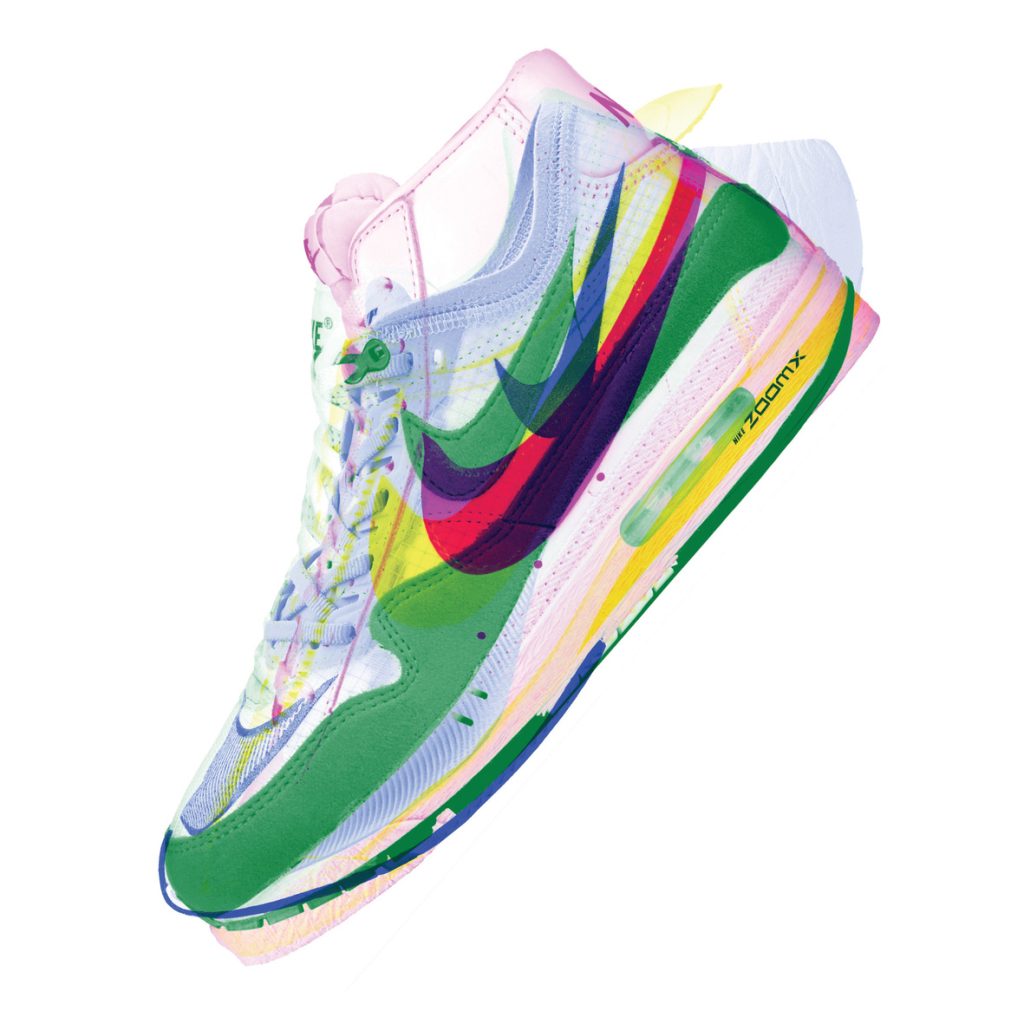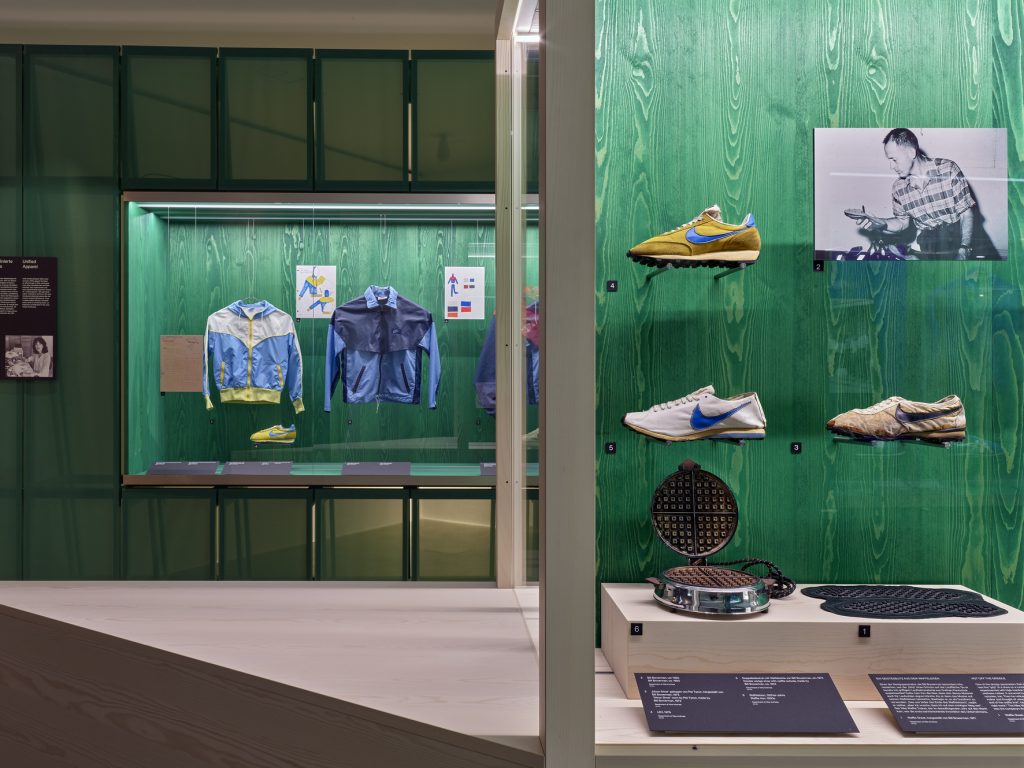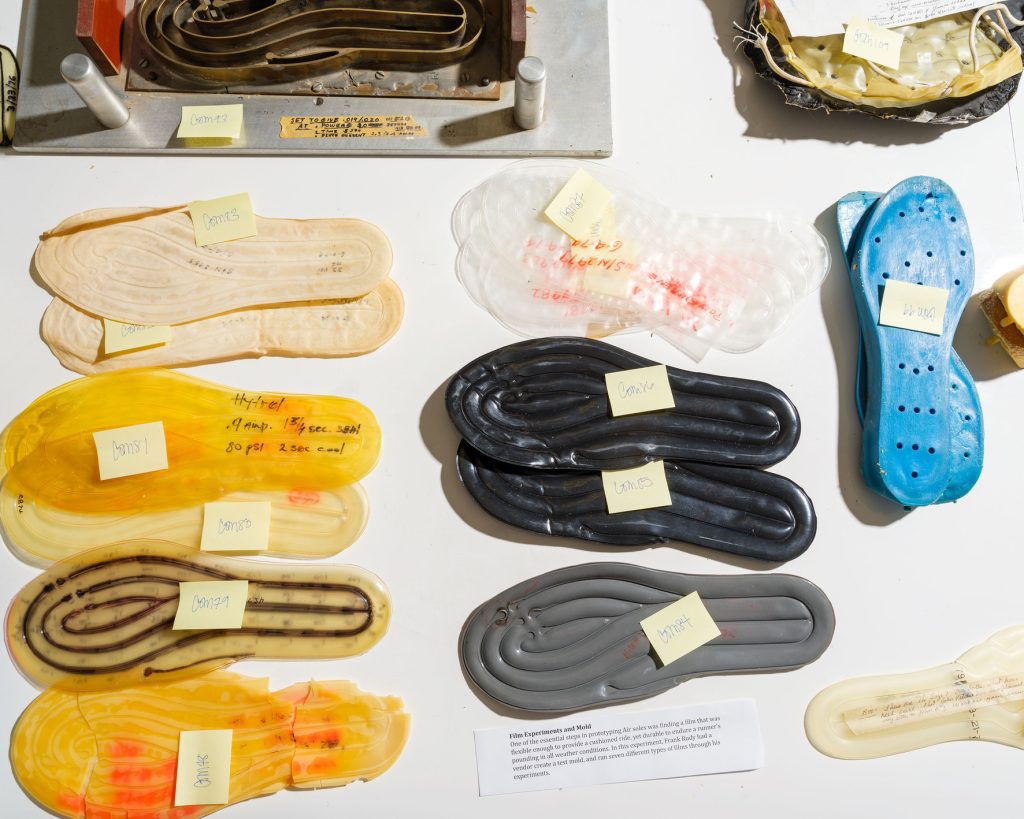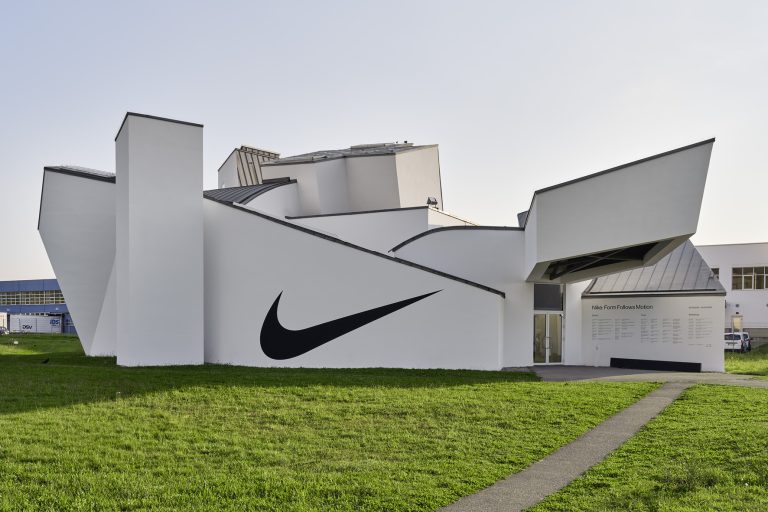
Courtesy of VITRA DESIGN MUSEUM
Graphic design by DANIEL STREAT, VISUAL FIELDS

Courtesy of VITRA DESIGN MUSEUM
Photography by BERNHARD STRAUSS

Courtesy of NIKE, INC.
Photography by ALASTAIR PHILIP WIPER

Courtesy of NIKE, INC.
Photography by ALASTAIR PHILIP WIPER
With Nike: Form Follows Motion, curator Glenn Adamson opens the vaults of Nike’s elusive design archives, offering a never-before-seen exploration of the brand’s five decades of innovation. Adamson turns this exhibition into more than just a celebration of sneakers – it’s a deep dive into the DNA of a brand that’s shaped everything from streetwear to social justice movements. As visitors walk through the exhibition, they’ll trace Nike’s journey from Bill Bowerman’s waffle iron to groundbreaking collaborations with the likes of Virgil Abloh and Comme des Garçons. It’s Nike as you’ve never seen it before: not just as a sports giant, but as a cultural force that continues to push the boundaries of design, technology, and identity.
hube: Nike: Form Follows Motion is the first major museum exhibition dedicated to Nike’s design legacy. What inspired you to take on this project, and how do you think it will impact the public’s perception of sports design?
Glenn Adamson: Nike did celebrate its 50th anniversary recently, in 2022. After this half-century of innovation, it seems like an appropriate time to take stock of its history, and especially the role of design in shaping its identity. The team at the Vitra Design Museum felt that this year would be a good time to stage the show, just following the Olympics and the football Euros – Nike and sport have been so much in the news. It is a great opportunity to give people an in-depth view of how the footwear and garments they see on screen are actually created.
h: The exhibition explores Nike’s influence on both design and popular culture over the past five decades. How has Nike navigated the balance between innovation and maintaining its core identity?
GA: That’s an interesting way of putting it because it makes me realise that Nike’s core identity actually is innovation. Since their early years, when co-founder Bill Bowerman relentlessly experimented with handmade prototypes for his own runners at the University of Oregon, they have been focused on technical optimisation. And already in the 1970s – and really taking off in the next decade, with the signing of Michael Jordan and other star athletes to endorsement deals – they have been equally focused on constant, experimental engagement with street style. Indeed, some classics like the Air Force 1 and Air Max are now part of the design history canon, but even these are revisited again and again, sometimes through collaborations with external voices like Comme des Garçons and Virgil Abloh. So those shoes become a platform for new ideas. I suppose this permanent focus on the new is what has allowed Nike to maintain its influential position in popular culture.

